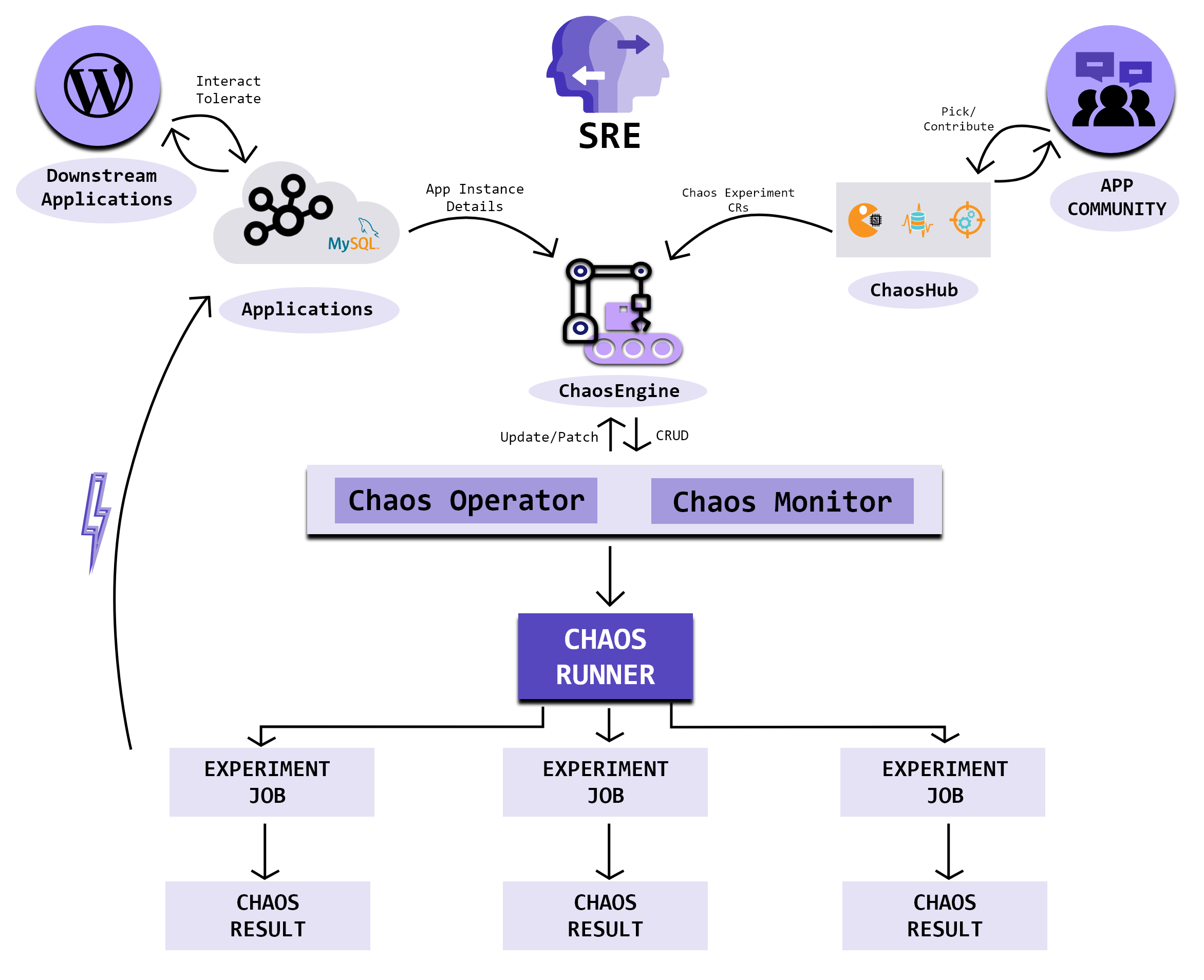
Introduction to LitmusChaos
Part2: Introduction to LitmusChaos
This is part2 of the series : “Simplifying Chaos Engineering in Kubernetes: A Guide with LitmusChaos“
What is LitmusChaos?
LitmusChaos is a CNCF project built for chaos engineering in Kubernetes environments. It offers tools to inject different types of failures into cloud-native applications. It helps teams test if their Kubernetes applications can handle real-world failures like pod crashes, network delays, and node failures etc.
LitmusChaos Architecture

LitmusChaos consists of several key components, each playing a role in executing chaos experiments within a Kubernetes cluster:
- Chaos Experiment: Preconfigured experiments that simulate failure scenarios like pod deletion, high CPU load, or network partitioning, which are used to test the resilience of target applications.
- Chaos Engine: A custom resource that links chaos experiments to target applications, specifying which resources will undergo chaos testing and defining the parameters for executing the experiments.
- Chaos Operator: It reconciles the state of the ChaosEngine by executing chaos experiments on the specified target resources. The operator watches for changes to the ChaosEngine resource(like create, update, or delete) and manages the creation of runner pods that carry out the chaos tests.
- ChaosResult: A custom resource that captures the outcome of each chaos experiment, detailing the success or failure of the test, and providing resilience metrics.
- ChaosHub: A public repository where predefined chaos experiments are stored, enabling users to pull and run chaos experiments directly in their systems.
- Workflow: A component from the Argo project that automates and orchestrates chaos experiments in LitmusChaos, managing complex workflows like sequential or parallel chaos tests. The Chaos Operator triggers these workflows based on ChaosEngine configurations.
How to use LitmusChaos for Chaos Engineering in Kubernetes?
LitmusChaos integrates seamlessly with Kubernetes by using custom resource definitions to manage and run chaos experiments. It also offers a userfriendly UI that makes setting up chaos tests easy, even for teams with little Kubernetes experience.
Through the UI, users can select predefined chaos experiments(like pod deletions, node drain, node memory hog etc.) and apply them to their applications to test resilience.
For example, you can simulate a pod failure to see how your application handles unexpected outages, helping you identify weaknesses and improve stability.
Few practical use cases for LitmusChaos:
- Pod Failure: Simulate the abrupt failure of one or more pods in a Kubernetes deployment. It helps test how the system reacts to pod level disruptions, whether the application can recover automatically, and if scaling policies or replicas are properly configured.
- CPU/Memory Stress: Increase CPU or memory usage on a target pod to simulate resource exhaustion. It helps identify if the application can handle high CPU or memory loads, and how it behaves under heavy resource stress.
- Node Failure: Simulate the failure of a Kubernetes node by draining it or restarting it. It helps test how the application behaves when a critical node in the cluster becomes unavailable, including how pods are rescheduled on other nodes.
- Disk I/O Stress: Generate high disk I/O on a pod to simulate situations where the disk becomes a bottleneck. It helps assess how well the application performs under heavy I/O load.
- Network Latency Injection: Add artificial network delays between pods or services to simulate poor network conditions. It is used to test the resilience of applications that rely on communication across microservices.
Conclusion
In this part, we explored the fundamentals of LitmusChaos and how it integrates with Kubernetes to perform chaos engineering experiments. We covered its key components, like the Chaos Operator, ChaosEngine, and ChaosHub, and highlighted some practical use cases for introducing chaos into Kubernetes environments. With LitmusChaos, teams can now efficiently simulate failures and assess the resilience of their applications.
In the next blog, we will get hands-on with LitmusChaos! If you have any questions on the topic, drop a comment, and I will do my best to research and answer them. 🙂

Pingback: Chaos Engineering in Kubernetes with LitmusChaos – A Step-by-Step Guide
Pingback: Installing and Configuring LitmusChaos - Getting Started with Chaos Engineering in Kubernetes - SnapInCloud
Pingback: LitmusChaos in Action: Practical Chaos Experiments - SnapInCloud